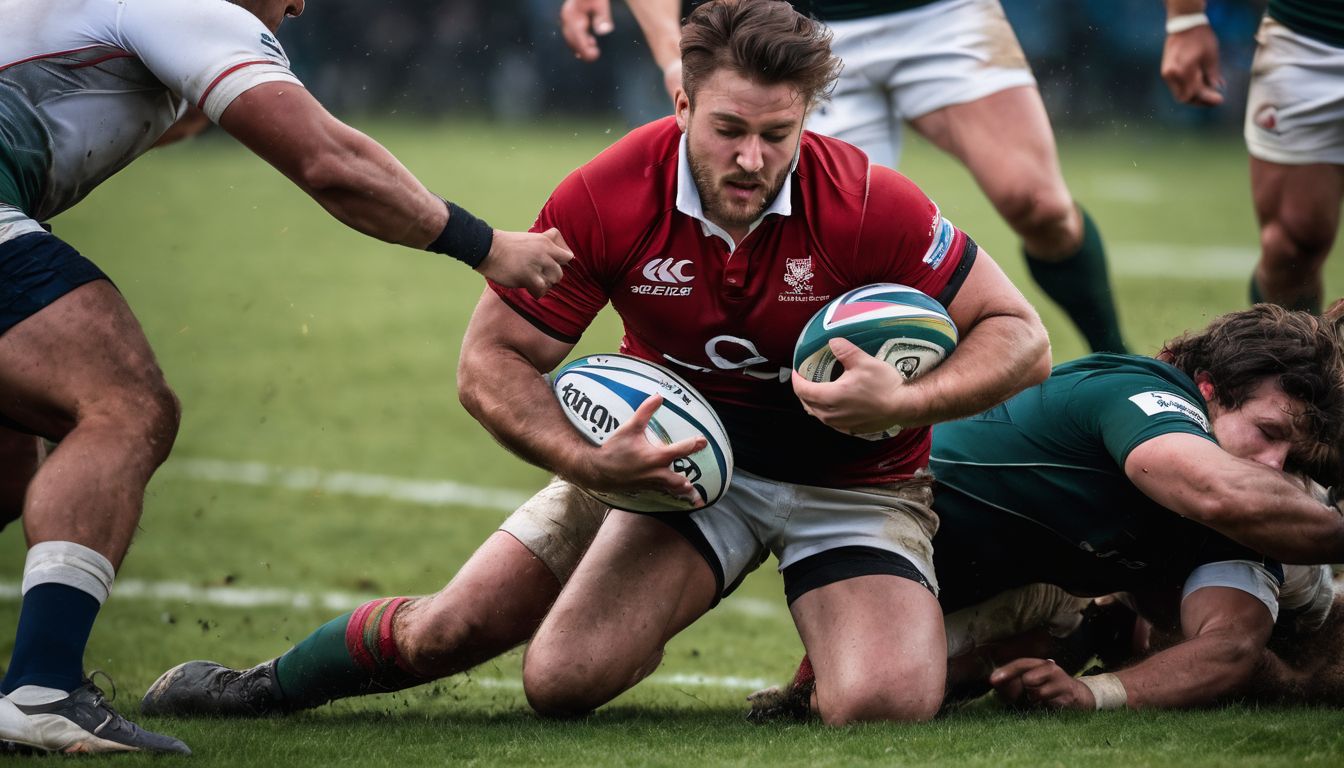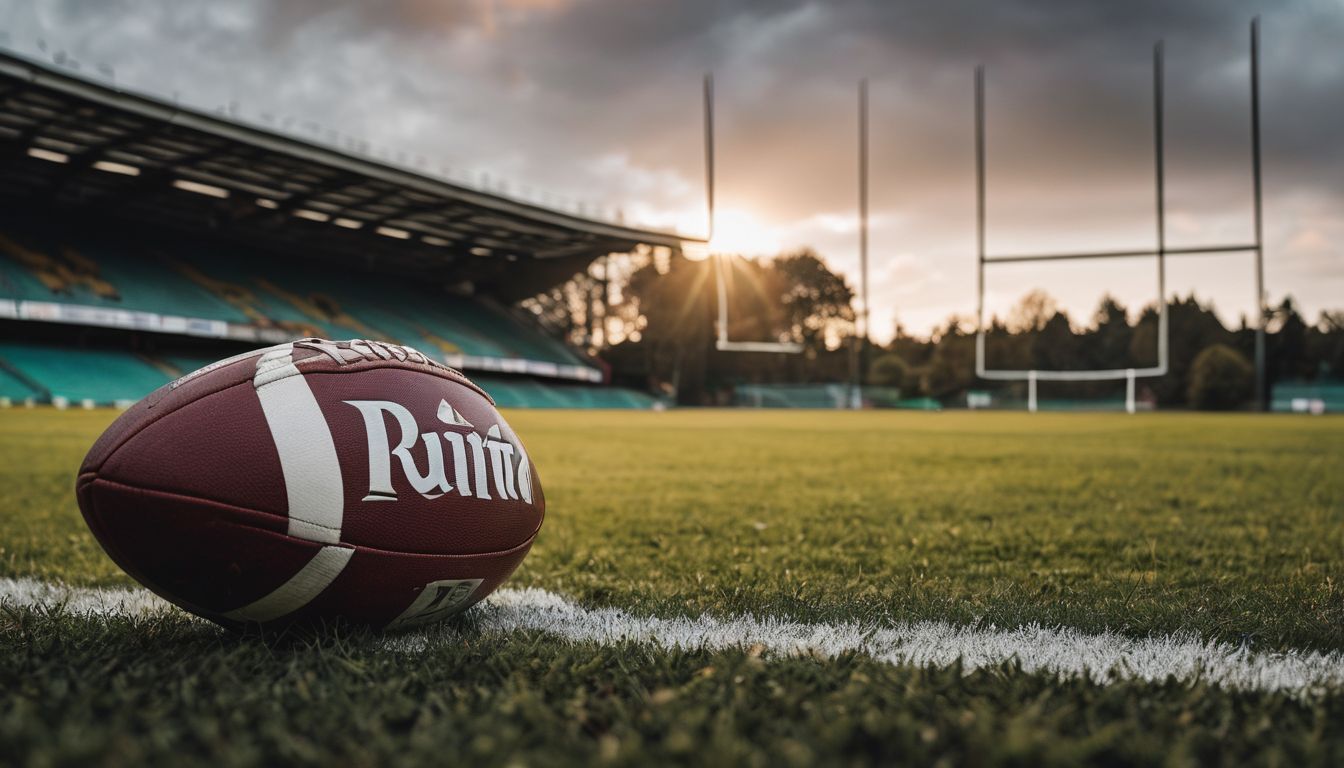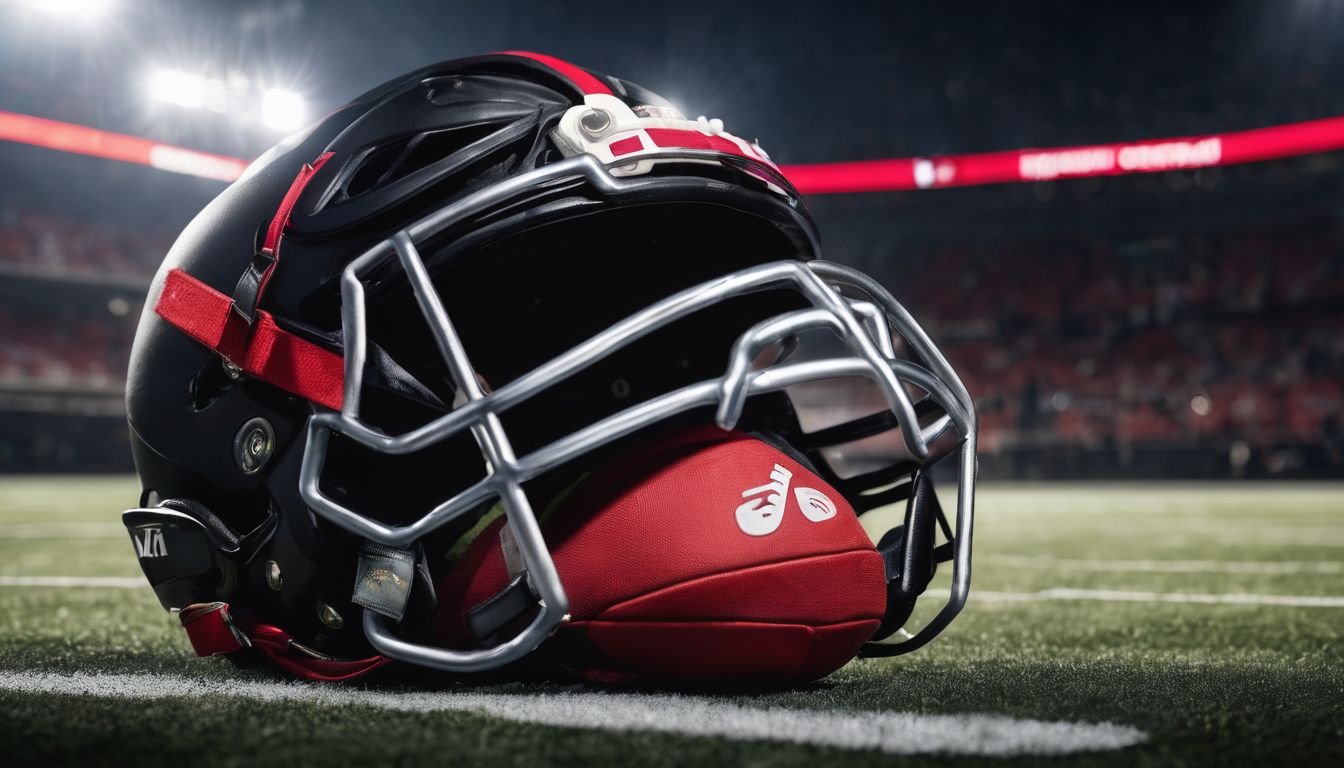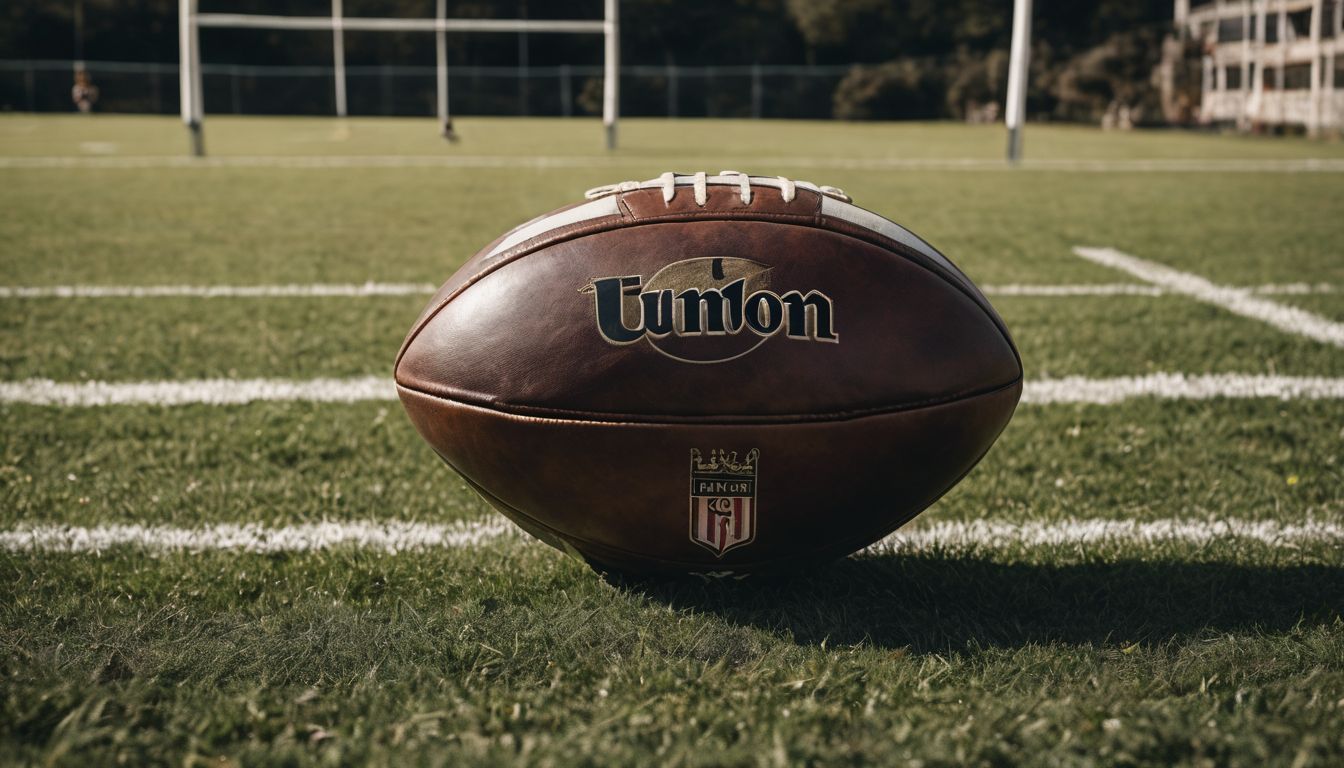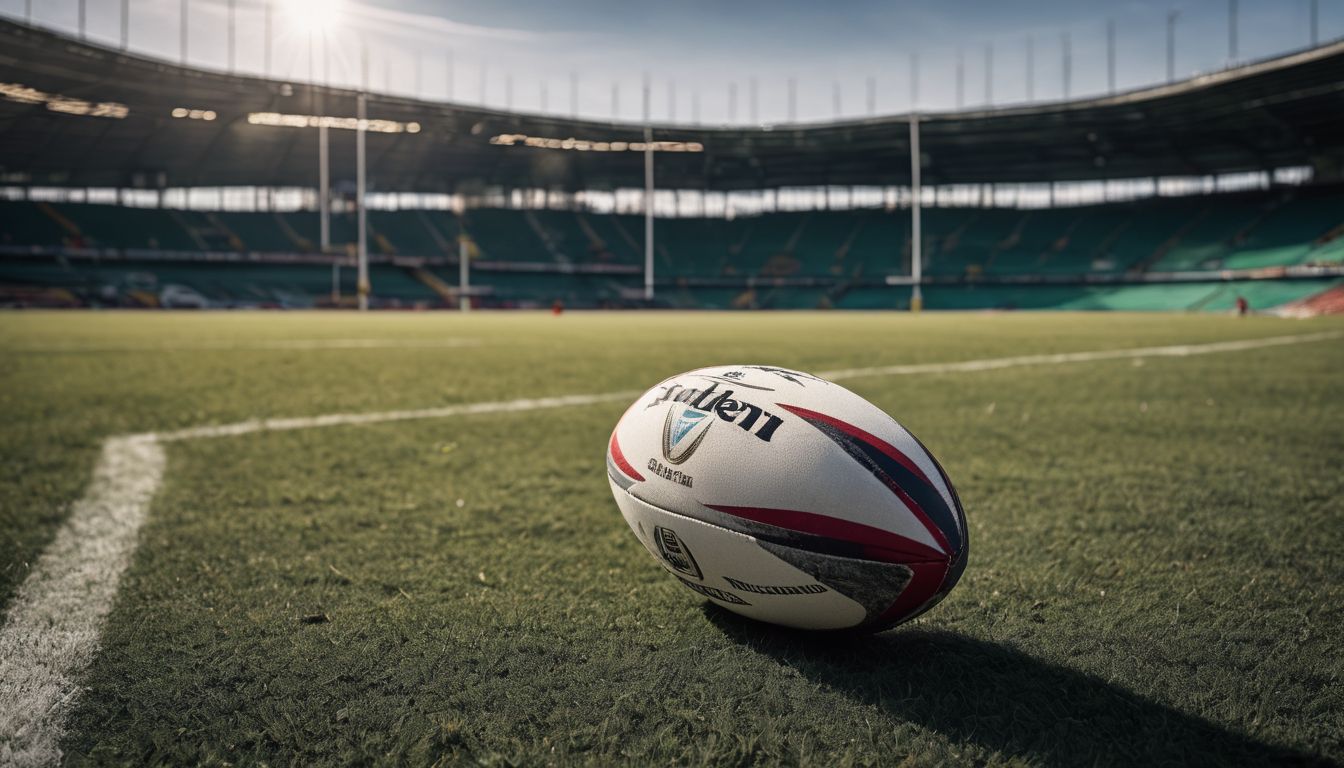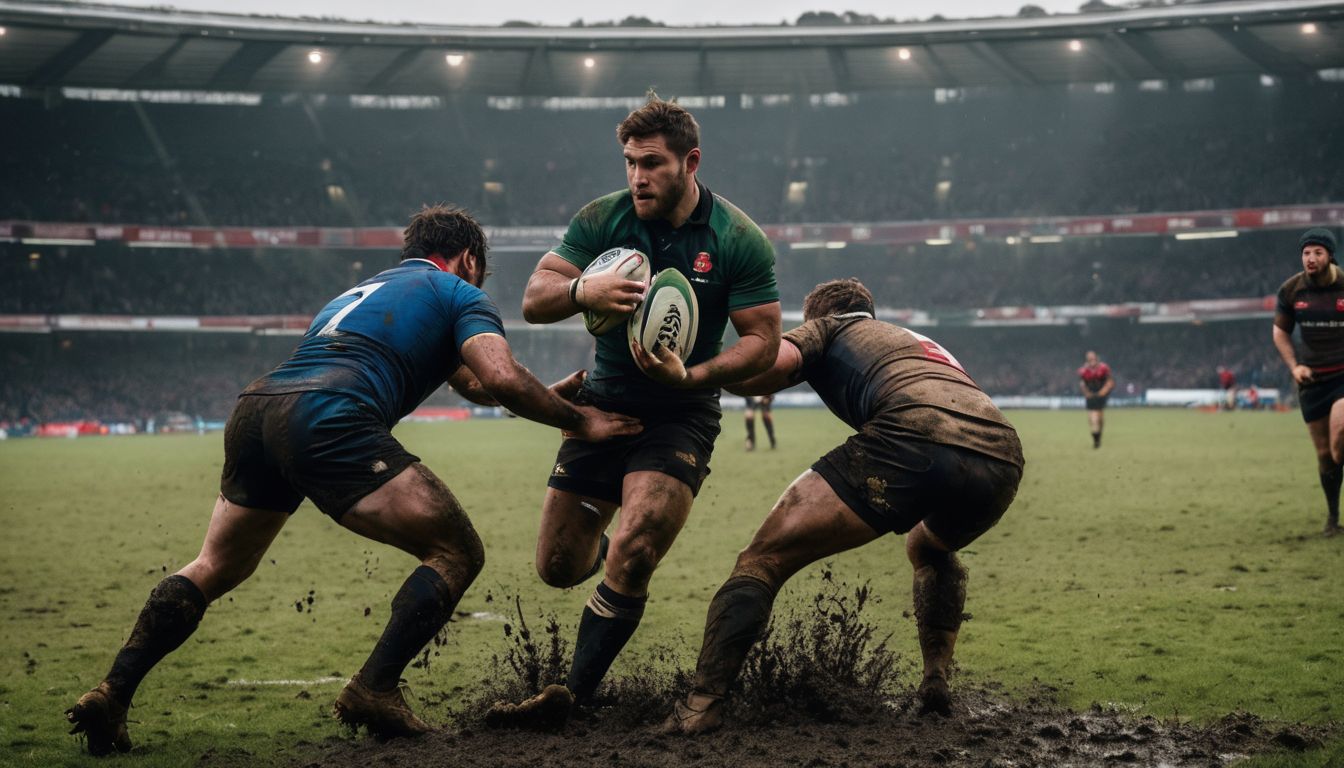Watching a rugby match, you might see a player taken off in the heat of action by an intense tackle. A high tackle occurs when contact is made above the shoulders and can be dangerous for players.
Our blog will clarify what constitutes a high tackle and explain its potential consequences, ensuring you know exactly why referees make those crucial calls on the pitch. Stay safe – read on to learn more!
Key Takeaways
- High tackles in rugby are illegal moves where contact is made above the shoulder, leading to penalties or player suspension to prevent serious injuries like concussions.
- Penalties for high tackles include giving the fouled team a chance to gain ground or score and disciplining the tackler with yellow or red cards depending on the tackle’s danger level.
- World Rugby’s High Tackle Framework enforces lower acceptable heights for tackles and sets minimum sanctions for reckless or accidental head contact, enhancing player safety.
- To perform legal tackles in rugby, players must use their arms when making contact and ensure they tackle below shoulder height to avoid penalisation.
- Referees strictly enforce rules against other dangerous plays similar to high tackles such as shoulder charges and holding another player off the ground.
Definition of a High Tackle
A high tackle occurs when a player makes contact with an opponent above the shoulder level. The essence of this rule is to ensure player safety by preventing injuries, especially those related to the head and neck.
In rugby, such tackles are regarded as illegal because they significantly increase the risk of concussions and other serious injuries.
Referees keep a sharp eye out for these infractions during the game. Should they spot a high tackle, immediate action is taken against the offending player, ranging from penalties to more severe punishments depending on how dangerous the play was deemed.
This regulation helps maintain fairness whilst prioritising health and safety in this high-contact sport.
Penalties for High Tackles in Rugby
When a high tackle occurs in rugby, penalties can be imposed on the tackled player’s team and consequences for the tackler. These penalties are enforced to ensure player safety and fair play on the field.
Penalty for the tackled player’s team
The tackled player’s team is awarded a penalty when a high tackle is committed by the opposing team. This penalty gives the fouled team the opportunity to regain possession of the ball and advance their position on the field.
It allows them to choose whether to kick for touch, take a tap penalty and run with the ball, or attempt a goal kick, providing strategic options for capitalising on the penalty and gaining an advantage in the game.
The penalty serves as a consequence for the infringing team while giving agency to the fouled team, shaping the flow of play following an illegal tackle. It forms an integral part of rugby laws aimed at maintaining fair and safe gameplay while offering tactical opportunities for teams to capitalise on penalties in various ways.
Consequences for the tackler
A high tackle can lead to severe consequences for the tackler, depending on the severity of the infringement. If a tackle is deemed dangerous or reckless by the referee, it may result in a yellow card, which temporarily suspends the player from the game.
In more serious cases, where there is intentional foul play or extreme recklessness resulting in contact with the head or neck region of an opponent, a red card may be issued, leading to immediate expulsion from the match and further disciplinary action.
These penalties not only impact the current game but can also have implications for future games and tournaments.
Rules for Tackling in Rugby
Tackling in rugby must be done at a legal height and with the use of arms. Safety considerations are key, as reckless or dangerous play can result in penalties for the offending player and consequences for their team.
Legal height for tackles
The legal height for tackles in rugby is below the line of the shoulders. Any contact made above this point is considered a high tackle and can result in penalties or further consequences.
This rule aims to protect players from potential head and neck injuries, ensuring a safer playing environment. Players must be mindful of their tackling technique to avoid making contact above the shoulder line, thereby preventing dangerous play and upholding fair gameplay standards.
To enforce this rule, referees have been strict with penalising high tackles that breach the acceptable height restrictions. World Rugby’s commitment to player safety has brought about changes in regulations, emphasising the need for lower acceptable heights for tackles and issuing on-field sanctions as necessary.
Use of arms in tackles
A legal tackle in rugby requires the tackler to use their arms when making contact with the opponent. It is important for the tackler to wrap their arms around the ball carrier upon making contact, aiming to bring them to ground in a safe and controlled manner.
The use of arms in tackles not only ensures fair play but also reduces the risk of injury for both players involved.
In addition to using their arms, tacklers must aim for legal height when executing a tackle, as per the rules set by World Rugby’s framework. By enforcing these standards, players can enjoy the sport while minimising potential risks from high tackles and promoting safety on the field.
Safety considerations
When considering the safety of tackling in rugby, it is crucial to emphasise the importance of protecting players from potential head and neck injuries. With a focus on minimising reckless and dangerous contact, the minimum height restrictions for tackles play a key role in safeguarding players.
Enforcing lower acceptable heights for tackles helps reduce the risk of high tackles leading to severe head or neck injuries.
In addition, given that penalties in rugby give fouled teams an opportunity to regain possession or gain territory, strict enforcement of safe tackling practices not only promotes fair play but also ensures the well-being of all players involved.
Changes to High Tackle Rules and Regulations
World Rugby has introduced a High Tackle Framework, which enforces lower acceptable height for tackles and imposes minimum on-field sanctions for reckless and accidental contact with the head.
Want to know more about the new rules? Keep reading!
World Rugby’s High Tackle Framework
World Rugby’s High Tackle Framework sets out guidelines to address and penalise dangerous tackles, aiming to enhance player safety and reduce the risk of head and neck injuries. The framework introduces minimum on-field sanctions for reckless or accidental contact with the head, emphasising the importance of players’ responsibility in making legal tackles.
Furthermore, it enforces a lower acceptable height for tackles, highlighting the need for proper technique and safe tackling practices to safeguard players from potential harm.
In addition, World Rugby’s High Tackle Framework aligns with the broader efforts to promote a greater understanding of what constitutes a safe tackle while preserving the physicality and competitive nature of rugby as a contact sport.
Minimum on-field sanctions for reckless and accidental contact with the head
Reckless or accidental contact with the head in rugby can result in on-field sanctions. If a player makes dangerous contact with an opponent’s head, they may face penalties such as a yellow or red card.
The minimum on-field sanction for reckless and accidental contact with the head aims to deter players from engaging in high-risk tackles that could lead to serious injury. These measures help enforce player safety and uphold fair play within the sport, emphasising the importance of responsible and considerate gameplay.
The minimum on-field sanctions for reckless and accidental contact with the head align with World Rugby’s commitment to reducing the risk of head injuries during matches. By implementing clear consequences for dangerous play involving head contact, rugby authorities aim to protect players’ well-being while promoting sportsmanship and respect on the field.
Enforcement of lower acceptable height for tackles
Referees are now enforcing a lower acceptable height for tackles, aiming to reduce the risk of head and neck injuries in rugby. The new regulations require tacklers to make initial contact below the line of the shoulders, ensuring a safer approach to tackling.
Players must adapt their technique to comply with these guidelines, emphasising the use of arms in making tackles and avoiding any contact above shoulder level. These changes align with World Rugby’s commitment to player welfare by prioritising safety during gameplay.
The enforcement of a lower acceptable height for tackles seeks to minimise the potential for reckless contact and its repercussions. By adhering to these rules, teams can mitigate penalties resulting from high tackles while promoting fair and safe play on the field.
Similar Infringements to High Tackles
Other common infringements in rugby include shoulder charges, holding a teammate off the ground, and any form of violent or foul play.
Shoulder charges
Shoulder charges are similar to high tackles in rugby and can result in penalties. A shoulder charge with a high degree of danger may lead to a yellow card, while one with a low degree of danger may prompt a penalty.
The initial contact from the tackler’s arm moving up towards the ball carrier’s head or neck is considered illegal, posing risks of injury. These types of infringements are penalised to ensure player safety and fair play on the field.
The enforcement of rules against shoulder charges is part of World Rugby’s effort to address dangerous play and protect players from potential injuries. This means that players need to be mindful of their tackling techniques and aim for legal height while making contact with opponents during games.
Holding a teammate off the ground
Holding a team-mate off the ground results in a penalty, as it is considered an illegal and dangerous play in rugby. This action occurs when a player tackles another and prevents them from touching the ground with their feet or knees.
The referee will award a penalty to the opposing team for this infringement, giving them possession of the ball and an opportunity to advance towards their opponent’s territory. Holding a team-mate off the ground poses a risk of injury to the tackled player, especially if they are unable to control their body position while being held up.
The rule against holding a team-mate off the ground aims to safeguard players from potential injuries, particularly neck and head-related ones. Penalties serve as deterrents for such infractions and emphasise fair play by penalising actions that could compromise player safety.
Violent or foul play
Violent or foul play, such as dangerous high tackles and deliberate shoulder charges, can result in severe penalties for the offending player. Referees are vigilant in enforcing rules to protect players from potential head and neck injuries.
Any contact above the shoulders or with a stiff arm to an opponent’s head is considered illegal and may lead to significant consequences for the infringing player. These penalties aim to maintain the safety of all players on the field while ensuring fair gameplay.
Players engaging in violent or foul play risk not only penalising their team but also facing personal repercussions, including yellow or red cards, which can detrimentally impact their team’s performance.
Conclusion
By understanding the definition of a high tackle and its penalties, rugby players and fans can promote safer play. High tackles result in penalties that allow the fouled team a strategic advantage.
World Rugby’s framework aims to minimise dangerous tackles through on-field sanctions. Non-compliance with safe tackling rules may lead to consequences for the tackler or their team.
Height limits and proper use of arms in tackling are critical for player safety.
FAQs
1. What exactly is a high tackle in rugby?
A high tackle in rugby is when a player tackles an opponent above the shoulders, which can risk contact with the head or neck.
2. What happens if a player commits a high tackle during a game?
If a referee spots a high tackle, they will usually give onfield sanctions such as penalties against the offending player and potentially even send them off for severe infringements.
3. Are there different types of tackling penalties for various high tackles?
Yes, depending on how dangerous the high tackle was and whether it involved head-neck contact, referees can issue different levels of penalties from warnings to sending players off.
4. Can players be punished after the match for a high tackle?
Players who commit serious high tackles might face further punishments beyond onfield sanctions through post-game reviews by disciplinary committees.



